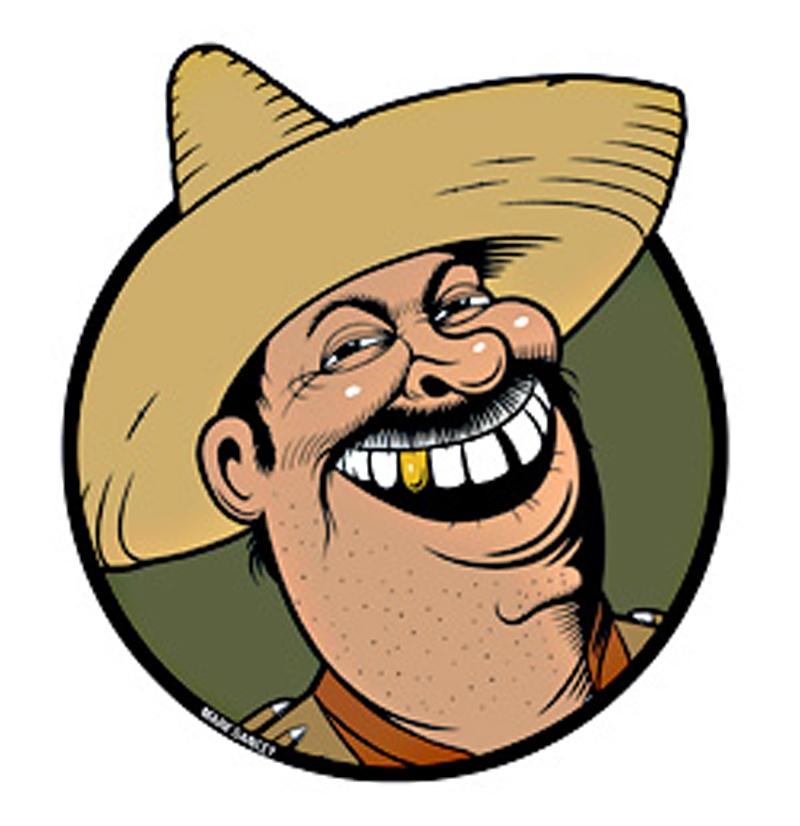Dear Mexican,
Why are indigenous peoples from north of the Rio Grande called redskins and those from south of it called brown-skinned?
El Hijo del Paleface
Dear Gabacho,
“Redskin” and its derivations date back to the 16th century, but its etymology is still being debated. Some historians say it’s a reference to scalping, others claim it describes melanin, and still others maintain the slur refers to war paint. The idea of Mexicans as brown, on the other hand, is más fácil to trace. In the early 1900s, Mexican intellectuals (yes, they do exist) began referring to Mexicans as a “raza de bronce” (bronze race) to highlight the historically maligned indigenous contribution to the nation’s gene pool. The bronze metaphor was simple but genius—bronze is a strong copper alloy with a golden-brown shine, not unlike the skin color of millions of Mexicans. Secretary of Public Education José Vasconcelos expanded on this concept further with his 1925 essay “La Raza Cósmica” (The Cosmic Race), which posited Mexico’s race-mixing of whites, blacks, Indians, and Asians as a natural, desirable evolution for mankind. Vasconcelos’ infatuation with Spaniards and denigration of the Indians he claimed to champion escaped Chicano activists during the 1960s, who appropriated the raza cósmica theory and declared themselves a “bronze” people. The Plan Espiritual de Aztlán, a 1969 manifesto unveiled during the First National Chicano Liberation Youth Conference in Denver and later incorporated by the college student group M.E.Ch.A., contains many references to bronze: bronze continent, bronze people with a bronze culture, la raza de bronce—but none to Mexicans as brown.
So where does brown fit into this racialist equation? Refry this: Since the United States historically classified its coloreds by prism rather than their soul, and given that the Chicano Movement arose during an era of racial pride, it was inevitable that Mexicans in the United States began referring to themselves as “brown” to differentiate from blacks, whites, yellows, and reds. The brown moniker for Mexicans is applicable only in the United States, however; when people want to describe themselves as brown-toned in Mexico, they use the word moreno, derived from moro (Moor, otherwise known as the Arabs who conquered Spain). Call yourself “brown” south of the border, and the people around you will probably give you a cup of joe.
I was recently in a small Mexican grocery store in central Wisconsin, and noticed a couple of spinner racks filled with Mexican music CDs. Without exception, the cover art depicted some combination of the following: girls, cars, guns, liquor, and cash. A couple managed all five. Since we seem to value much the same things both north and south of the border (girls, cars, guns, alcohol, and cash), why can’t we get along?
Wanna-Be Gangsta Mariachi
Dear Gabacho,
Mexicans in WISCONSIN? I knew about the Milwaukee Brewers adding a chorizo to their legendary sausage races at Miller Park, but I figured that was a cheap pandering attempt à la CBS’s Cane. As to your question: I agree. Mexicans and Americans are more alike than either side cares to admit.








